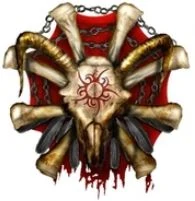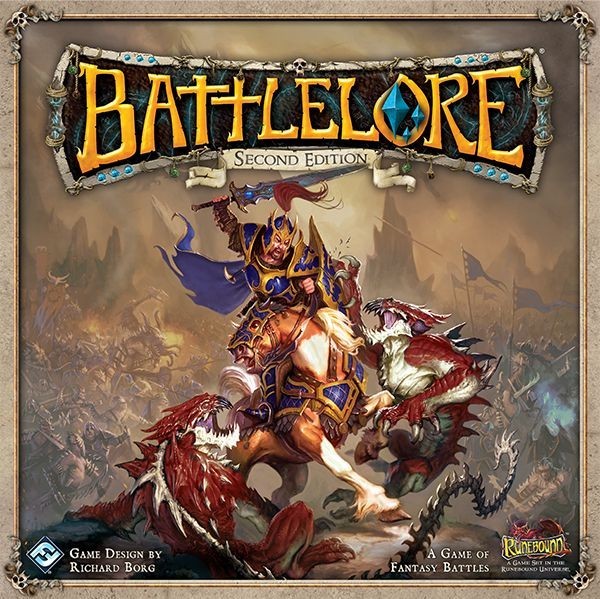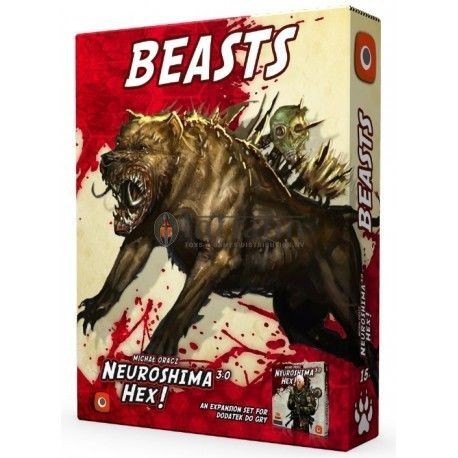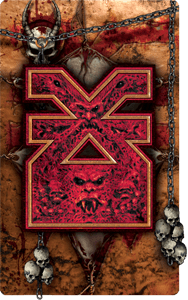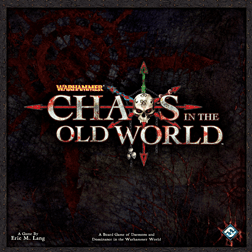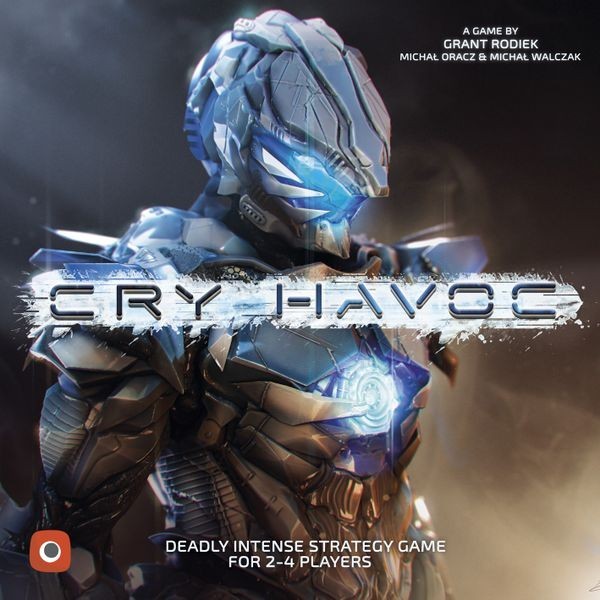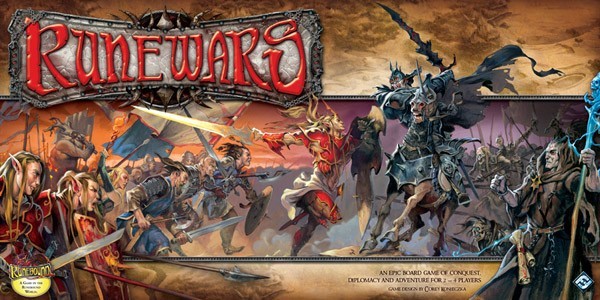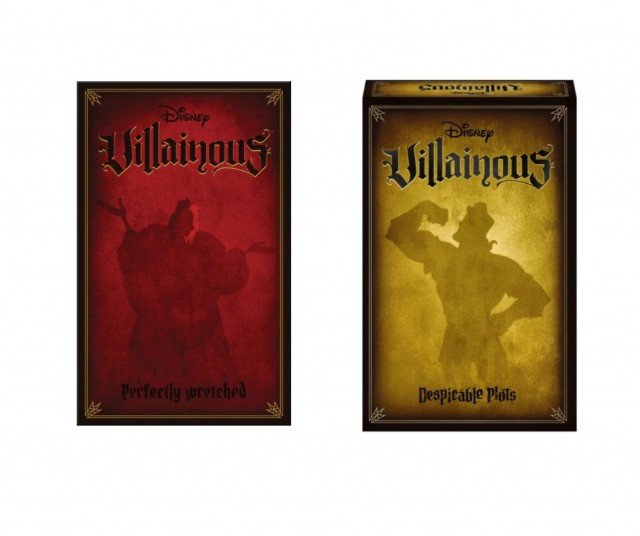The series ends where it all ends: undeath and the purple hordes of Waiqar
The shambling hordes of the supreme necromancer, Waiqar the Undying, were the first and, to date, only "new" army for Battlelore 2nd Edition. They, like the Daqan and the Uthuk Y'llan, were introduced in Runewars as major factions contesting the rule of the world of Mennara/Terrinoth. They were also what some considered an example of power creep in B2E because regular players of the blue and red guys immediately found beating the purple guys to be quite the challenge. It's true that Waiqar's forces can easily be played aggressively like most think of the Uthuk and stolidly like most think of the Daqan. But it's the mix of the two which is inherent to both of those other armies that really stands out for Waiqar. While the other two factions can be played in a manner determined by a list, the undead can frequently shift gears in game because the theme of the faction is more about constant recycling and, well, reanimation of what you were doing before and then taking advantage of the new circumstances caused by the appearance of a whole new unit of Reanimates in that Graveyard tile you set up to do just that. There's also a theme of a slow, grinding death for the opponent, not only from the reviving dead, but from the variety of direct detrimental effects, like Blight, and largely psychological ones, like Panic. As with the two base factions, there are an enormous number of tricks that you can execute with both inherent abilities and Lore cards. Is it actually OP? Let's take a look.

Reanimates- Move: 2; Attack: 1; Health: 3
Infantry/Minion/Melee
Reanimates are the bedrock of the undead faction, not only because they're meant to be used over and over again from game to game, but within each game, as well. And they don't even need Necromancers to do it, as Cleaves can be used to put your shambling skeletons back on their feet. It doesn't help the swing you just made, but it will mean that you get to keep swinging, again and again. It also helps your attack rating, since Legion means that the more of you there are, the harder you hit, which is the exception to the rule that all other units in the game apply themselves to. If you only have one Citadel Guard, he's still rolling 3 dice, albeit as a Weak unit. If you only have one Reanimate, you're only rolling 2 dice. But if you have a full unit, you're rolling 4, which is the normal province of Elite and Legendary units. 4 dice on a 4 point unit is some good, most of the time. Reanimates also have the keyword 'Minion' which, like the Daqan's 'Knight', opens up some ability and Lore options that the rest of the army can't access. So, just like with the two base factions, it's certainly not a bad idea to build your list around the most basic of Waiqar units, as there will be plenty of opportunity to make them as obdurate and often as potent as any other unit in the game.
The Waiqar Lore decks are a solid mix of active and reactive cards. Several of them in the reactive category are those that emphasize the essential nature of fantasy undead: standing up and walking again and Reanimates are the obvious target for such things. Thus, among the most effective cards for Reanimates are things like Raise Dead, which requires elimination of an enemy unit and must target a Minion unit, which is then returned to full health in the place of the destroyed enemy. Of course, you don't have to wait until your Reanimates take damage if you just want to spend 3 Lore to teleport them across the board, but you still have to wipe out that enemy unit, so it's not as easy as it initially appears. Grim Command is another ideal card, especially if you have a high number of Reanimates, since you'll be able to exceed your Command card choice by 1. Shadow Assault is kind of a constant in that it's useful for any Waiqar unit looking to do a one-shot, especially because it allows you to appear anywhere on the battlefield to roll your increased dice. Likewise, Unholy Fervor is a board-wide effect that allows your shambling horde to surge forward. Having a Move 3, Attack 4 unit seems good. The two obvious picks for scenario for Reanimates are Dark Ritual and Cradle of Whispers with their two free Graveyards. The Dead of Night is also solid for enabling the placement of Graveyards in your opponent's half of the board.

Bone Horrors- Move: 1; Attack: 3; Health: 3
Infantry/Minion/Melee
Horrors are one of those "you have to try them to believe them" units, as the initial glance makes them seem like they wouldn't be worth deploying. With only 1 movement and a decent attack value and the inability to retreat, which means that Morale results are automatically a point of damage, there doesn't seem to be a huge argument in their favor. However, the other side of Unyielding is that they're also never Weak. And you can compensate for their slow pace with Compelled as long as you have a Lore to spare and, given the ability of Necromancers to generate it, you typically will. One of the best purposes that Horrors serve, however, is simply endurance at a cheap cost. At 3 points, they're the cheapest unit in the game, but they're still wielding 3 Attack like normal infantry. And since they're Minion units, they're subject to the same abilities and Lore cards that Reanimates are, most notably Raise Dead, which I've often used to even more effectiveness with Horrors than their shambling fellows.
But similarly to their fellow Minions, Horrors are mostly about endurance and stick-to-itiveness. They aren't often going to make huge impacts in the Attack phase, not least because they don't have any special icons (Heroic, Strike, Cleave, Lore) to take advantage of like many other melee units. They're a great example of a "vanilla" unit that you drop into the middle of a section you're trying to hold that simply won't go away. As a Minion, they can be used for Graveyard hexes, of course, and Grim Command serves the same purpose for them as it does for Reanimates. Manor of the Duke, River of Fate, and Keeper of the Bridge are ideal situation for Horrors who are simply there to blockade progress of he enemy and enable the VP condition for Waiqar. Dark Ritual is also a good pick, since you have less concern about activating the VP condition (removing a model of a unit next to Necromancers), since Horrors will never be Weak. And, again, Dark Ritual and Cradle of Whispers with their two free Graveyard placements always (ahem) cries out for more Minions and The Dead of Night means your Horrors can be obdurate right in the middle of your opponent's deployment.

Skeleton Archers- Move: 2; Attack: 2 (Ranged 1-4); Health: 3
Infantry/Minion/Archers/Ranged
Skarchers are also Minions, so everything said about the previous two units also applies to them, but can be even more effective if you're playing one of those "bunker in"-type scenarios because the Skarchers can simply stand back and pepper your opponents on their way in and, even if they take damage in the process, can stand up and do it again from another corner of the board where you've conveniently placed a Graveyard. But Skarchers also have one of the more devastating Heroic abilities in the game, since they can Blight a target unit, which your opponent will be desperately trying to remove, moreso than many other deleterious conditions, since it not only makes them Weak but also reduces their movement to 1. Riverwatch Riders with a movement of 1 are, shall we say, less than optimal and in a game that depends on movement and positioning, Blight can be devastating. That said, we're still talking about a typical Ranged unit that will only be wounding on Pierces and would otherwise be hoping for Morale rolls to have real impact. But with the Heroic results causing havoc AND being able to take advantage of Graveyards and Raise Dead, Skarchers can be among the most valuable Ranged units of the game, if you're willing to put the time in with them. As with other Archers, Darken the Skies can make them mildly absurd (and it even has the appropriate art on the card, almost like it was planned...)
As before, Raise Dead and Grim Command are fully applicable to Skarchers, with the latter being especially useful to take potshots of opportunity. But they're also useful with the otherwise odd card that is Curse of Decay. With many other units, it seems too situational, since you can't play it on anything but a Weak enemy unit. But Skarchers can create that on the regular, even if the unit isn't technically "Weak". Of course, to use the spell properly, they do have to be Weak, so it remains kind of situational, but it still seems more applicable with Skarchers around. It's also the only way to get the Plaguelands terrain into play, which is kind of a narrow application. Given their ability, Skarchers are also the perfect unit to use with Will of the Undying, since they'll automatically Blight any target they choose. And, of course, Deadeye Marksmen is made for them, while Invoke Despair is also ideal for their presence, pending the amount of Blight that they've been able to toss around. The Culling is an interesting scenario choice for them, given the block of hills in the left section that would allow multiple units to operate with abandon while a support unit takes the VP hex. In contrast, Tip of the Spear gives them two widespread hill locations, which also involves the VP goal. Dark Ritual, with its free Graveyards placed adjacent to or near hills and buildings is also solid, while Keeper of the Bridge is great, since it gives two opportunities to create Retreats.
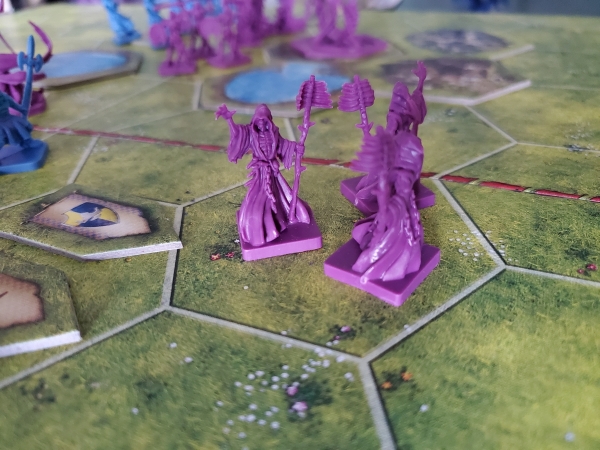
Necromancers- Move: 2; Attack: 3 (Ranged 1-3); Health: 3
Infantry/Caster/Ranged
You can certainly make the argument that Necromancers are the best Caster unit in the game. Not only do they enhance the offensive power of Minions around them, but their Lore results don't just gain it for Waiqar, but also steal it from the enemy with Drain. Given the considerable expense of Waiqar's Lore decks, having more Lore is always a positive thing. But draining that resource from the opposition is almost as good and one roll does both. As referenced above, putting your Necros in a bunker situation with your Skarchers, gaining the bonuses for Ranged units from whichever Command or Lore card you choose to use, and then potentially getting to use Influence to attack with your Skarchers again can be really demoralizing for the opposition. In the same way that Obscenes are a default choice for the Uthuk, Necros are for the purple guys. They simply do so much when accompanied by Minions that they're basically irreplaceable. That's not necessarily a good thing when it comes to list variety, as it speaks to the mild downsides of some of the other non-Minion units that I'll get to, but it's so much fun to keep exploiting the inherent traits of the army and Necros exploit those traits more than anything else you'll put on the table. Battlemages? Sure. Sisters? Maybe. Necros? Without question.
Just as with Skarchers, Will of the Undying is excellent, since it will automatically enable Influence with every attack by your Necros. Similarly, Dire Influence should always be selected if you're going to have cavalry and/or Wraiths in your list, since it will just make them that much more potent if they're within 2 hexes of your Casters. Given that you're spending points on what is clearly a support unit, I've often found Death Mark to be a regular addition to boost all of those menial Minions that you keep Influencing and resurrecting. Both The Culling and Manor of the Duke are applicable to a bunkering approach with Necro-heavy lists; with the former's Command repetition ability often met more easily by your regularly Draining units. Taming the Twin Vipers is also useful with that more enduring style to victory. Given the regular ability to have access to Lore, it's also not outrageous to think that Swamp of Corruption or The Banshee Wood might be advantageous, since you'll be able to use excess Lore results to perform other tasks.
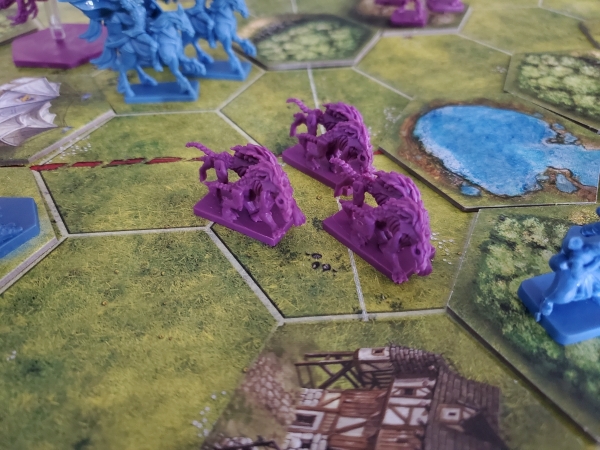
Barghests- Move: 3; Attack: 3; Health: 3
Cavalry/Melee
Barghests are one of the stranger units in the game. They present as a straightforward cavalry unit with unremarkable stats. But, unlike any other unit, they're actually encouraged to operate alone, since they gain extra movement with Stalker, and Howl generates Panic which does damage to affected enemy units on their combat rolls. So, there's no immediate impact to a Panicked unit and they can remain Panicked throughout the game with no effect as long as they don't roll combat dice. But when they do, their Morale rolls do damage to them. I've always tried to discern the thematic underpinning to that ability and have always failed. It feels like Howl should function similarly to the Banshee's Horrifying but instead it's a lasting effect that only affects certain offensive results by the affected unit. All of the other lasting effects either have an immediate penalty or are an enhancement to the unit that caused them, so perhaps it could be said that the real upside is the trepidation created by not really knowing if it's going to matter? Psychological warfare is a thing and it is something that seems to be baked into certain aspects of Waiqar's forces, so maybe that was the intent. That said, Barghests also don't make especially impactful cavalry, since they don't deal damage like Rippers or Lancers and don't have the disruption or movement of Riders. They are faster than anything in the Waiqar list other than Wraiths and the Wyrm, so there's something to be said for being faster than a bunch of staggering corpses. Even so, its a relatively rare list that really employs them, simply because they are such a tweener unit and more expensive than the array of Minions that can be affected by Necromancers and used with Graveyards. Id' like to look at Howl and Panic as the trove of potential damage that they seem to have, but my experience with them has rarely matched that potential.
Obviously, Release the Hounds is intended to be used with Barghests, but I can't say that I've found it particularly compelling, since I'd usually rather have a full strength cavalry unit than Panic the enemy. However, it does Panic three units anywhere on the board which, again, is a lot of potential damage for just 2 Lore, so I can see the possibilities. I've just never really experienced them. Likewise, they're an intended target for Dire Influence and could be really useful in that context, but I'd rather use said card on Death Knights or Wraiths, given the opportunity, especially since they cost the same points. Unholy Fervor is also a good choice, since it will affect all your dogs, as well as the rest of your army. Clearly, with a Heroic ability, Barghests are also a good unit for Will of the Undying. It just depends on whether you think that ability is worth the Lore. The combination of Barghests, Wraiths, and good placement of Graveyards can certainly present the image of a genuinely mobile undead force, so it's certainly not unreasonable to try to make that image a reality. It just seems to be lacking some of the foundation in point costs and, thus, feasibility.

Death Knights- Move: 2; Attack: 4; Health: 3
Cavalry/Knight/Melee
Death Knights are the game's slowest cavalry, but also the hardest hitting, so you take your good with the bad. Similarly to Lancers, the potential of DKs to churn out some absurd damage numbers is there, given that all Morale results on their target will simply be more (immediate!) damage as long as you have a Heroic result in among those 4 dice, as well. But even if you don't get Executioner to happen, you're still rolling 4 dice, which is always a bonus. Unholy Might also seems like something of a side effect, given the random nature of being attacked out in the open by a Weak unit. But it also protects them from potshots by Weak archer units, which can be something of a regular saving grace if your opponent is focusing all their attention on stopping the ponderous battering ram driving up the middle of their formation. As with their name, DKs also carry the Knight label, which doesn't have any effect in Lore decks outside of the Daqan, so it's kind of extraneous, but one can assume that there might have been expansion ideas that carried more Lore cards where it may have come into play in the same way as it did with the humans in Hernfar. Similar to the Chaos Lord, DKs can be something of a pivot unit for Waiqar; turning the whole emphasis of your army based on your opponent's attempts to either engage or avoid the dark horsemen.
Obviously, Nightmare Presence can be a great use of Lore for DKs, since it guarantees either a retreat or a point of damage if you manage a Heroic result. The converse is Will of the Undying, since it guarantees a Heroic result and damage as long as you roll Morale(s.) The upside to Will, of course, is that it affects the bulk of your entire force, which is a pretty good swing for only one more Lore. However, if you're really trying to clear a VP spot which can then be occupied by your DKs, Presence is the way to go. Cruel Convergence can also help compensate for the Knights relative paucity of movement, as well as bring other units into the fray. If your opponent has decided to move as many units as possible against your knightly hammer, Mists of Dread may be the way to keep them alive for another turn or two. Both Dire Influence and Unholy Fervor are great for that moment you decide to advance across the board. Death Mark and Shadow Assault are also good "overkill" cards for when you really need to remove an opposing Legendary. Scenarios like The Culling and The Banshee Wood are good for exercising that pivot point approach referenced above, as is The Widow Stone, especially if you're using your DKs as the ultimate enforcer to keep that central hill clear of enemies. That scenario also protects your Knights from potential counters. Banshee Wood also gives you more opportunity to exercise Executioner. The Dead of Night gives more opportunity to have supporting/intercepting Minions in your opponent's half of the board to support where your Knights are likely to be and, of course, The Cradle of Whispers will let you boost the movement of one of your DKs to bring them up to normal cavalry pace.

Wraiths- Move: 3; Attack: 2; Health: 3
Elite/Melee
Flat out, Wraiths are one of the coolest units in the game, even with the less than Elite attack rating. Being more mobile than most infantry, able to move through friendly and enemy units, and Possess one of them to swap places and deny a counter? Some good. That's on top of Ethereal effectively giving them Flying against everything but Casters. The tricks and maneuvers you can make with this unit are basically endless (some might say "eternal"...) and go way beyond getting that Heroic result to swipe a VP banner spot. Your opponent has taken a bunker position around some forests? Fine. Walk through the intervening unit of Horrors and through your opponent and into that forest before attacking. You only have 2 dice, so the terrain effect of forest isn't a concern. Plus, now you'll be behind that unit, which means you can attack first with the Horrors and turn retreats into wounds. Oh, and even if the enemy is something huge like a Chaos Lord, they'll only be getting 1 die against you on any counter because of the combined effects of the terrain and Ethereal. That's just one example of many that can turn up again and again in any game with Wraiths. Of course, your opponent will be eager to target them with the aforementioned Casters, but that's why maneuvering to keep more expendable (and revivable) units of Minions in between your spirits and those evil mages is worthwhile. Honestly, the list of possibilities is endless. I almost always take Wraiths in any Waiqar list I play.
Of course, your opponent will continue to throw everything at your Wraiths, which is why keeping Vengeful Spirit on hand isn't a bad idea, not least because its effect (1 damage and Blight to all adjacent) is tremendous if you happen to be wiped out while at least two units are battering you. As with others, Will of the Undying can guarantee your Possess results, while Wraiths are also excellent recipients of Death Mark and Dire Influence to try to enhance their mundane attack value through specific targets or repetition, respectively. Shadow Assault would also be perfectly thematic, but Morbid Grasp, one of the most powerful general cards in the Waiqar decks, is also brilliant with Wraiths, since it leaves enemy units that were going to move in prime position to be manipulated by your evil spirits on the following turn (in addition to simply spoiling your opponent's plans.) Scenarios like The Culling and Manor of the Dead can heighten the trepidation that your opponent feels about dealing with your manipulative ghosts, since they'll never be quite sure how your Command step is going to turn out. Dark Ritual is similar, since you can step from one Graveyard to the next. Given their mobility, The River of Fate is always a solid pick for their ability to reach that Waiqar banner in your opponent's half and The Dead of Night's VP goal is much easier to accomplish with Wraiths on your side.
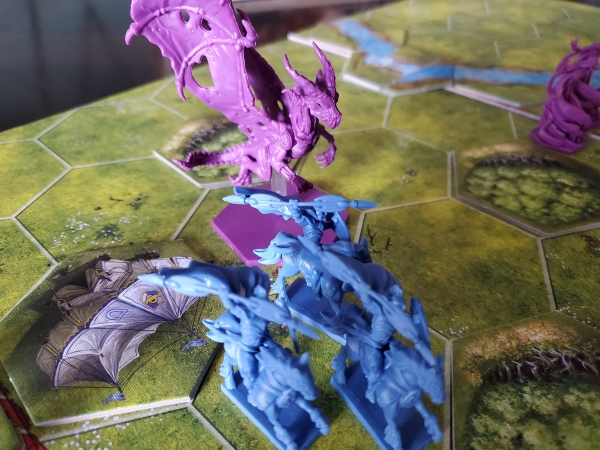
Barrow Wyrm- Move: 3; Attack: 4; Health: 6
Dragon/Legend/Melee
There's only one other dragon unit in the game and it costs just as much as this one, which will likewise take up 20% of your total army list cost. But the Wyrm is almost always worth it. Not only is it a Flying unit, which helps keep it (un)alive, but it can also spread Blight to multiple units in one roll with Plague Breath and give you 2 Lore every time it eliminates an enemy with Harvest. It's a force to be reckoned with everywhere on the board. For all that I'm often reluctant to use Lore results for anything but gaining more Lore, Plague Breath may be the exception, since Blight basically cripples opposing units and the ability to do it to either your target or an adjacent enemy (if not both, with enough results) is huge. It's a perfect example of that slow, grinding drain that is the essential element of the Waiqar faction as a whole. Plus, since you have Harvest, you might end up gaining that Lore that you'd otherwise be missing, anyway. You'll feel the sting of that 10 point cost because you want your Necromancers and Wraiths and Reanimates, but the Wyrm can be game-changing on its own and is never a bad choice, which is high praise for a Legendary unit.
Ruinous Wake is amazing, not only for the extra order and the extra movement, but the ability to spread Blight to every enemy the Wyrm passes through. Your opponent will learn to fear this card. Of course, with so much Blight to be had, Curse of Decay also becomes a viable choice with the Wyrm around which, in turn, means that Invoke Despair is also quite convenient. Death Mark is also a solid choice for the possibility of getting 40% of its cost returned to you by Harvest. But, really, most of the non-unit specific cards have some use with the Wyrm. It's that good. The same is true for the scenarios. You'd often like to emphasize the ones that create terrain corridors, such that enemies will have a hard time avoiding your dracolich and its Plague Breath, like Tip of the Spear or Taming the Twin Vipers, but the Wyrm is such a presence everywhere on the board that the Waiqar scenarios don't really present a specifically great circumstance of it to take advantage of moreso than others.

Banshee- Move: 2; Attack: 4; Health: 5
Legend/Melee
And, for once, I can drop almost all of the same superlatives on the other Legendary unit as I did on the first. In many ways, the Banshee can even be a better choice than the Wyrm, since it won't present as obvious a threat to the opponents who haven't regularly faced it with experienced users. The tactical applications for the Banshee are, like with its kindred Wraiths, enormous. It's the perfect example of a "combined arms" effort, given what it can provide to adjacent friends with Unwavering Aura, what it can do to adjacent enemies with Horrifying, and what it can provide to the army overall with Cursed. For once, you don't have to worry about losing your Lore tokens to an ability, because Cursed gives you two as long as there's a wound on the Banshee. The only restraining factor that this unit has that the Wyrm doesn't is its movement, which is poor, but since you want to keep it in close proximity to the shambling hordes that it will support, that's not always as problematic as it might seem. Similarly to the Wyrm, the Banshee can shape the way the battlefield moves. It is, like the Knights, a potential pivot unit, not just for itself, but for the crowd of units around it. I've used the Banshee to stymie an opponent's aggressive approach simply by being nearby and keeping my center from becoming fragmented. When she does get into contact with something, 4 dice, as always, means a lot, especially since she can dole out retreats to every enemy around her and not just her target.
Cruel Convergence is one of the best cards for the Banshee and her crowd of supporters, since they'll all be able to shift toward one enemy. As another Heroic-using unit, The Will of the Undying becomes available for use. Summon Phantasm often becomes quite usable with the Banshee crowd dominating one section, as those opponents eager to avoid Panic tokens will be even more restrained in their attempts to avoid said crowd. And when they do set up where they feel like they can be effective, you unleash Shrieking Torment and make them decide between damage you do to them and damage they might do to themselves. They'll almost always take the Panic tokens, which might work out, but it can still be a tough choice, especially if their units have already taken damage. Banshees are great at influencing an area and keeping opponents from trying to sit on certain hexes, as in the VP goals of The Widow Stone, The Cradle of Whispers, and Keeper of the Bridge. Taming the Twin Vipers and (unsurprisingly) The Banshee Wood are also good for this, as protecting 2 VP banner spots will be easier in the terrain channels on both of those maps.
Lore deck 1: Cruel Convergence, Curse of Decay, Darkness Falls, Deadeye Marksmen, Death Mark x2, Desecrate x2, Invoke Despair, Mists of Dread, Morbid Grasp, Nightmare Presence, Raise Dead, x2 Reign of Terror x2, Ruinous Wake, Spirit Possession, Vengeful Spirit, Will of the Undying. Total cost: 77. Average cost: 3.85.
Lore deck 2: Death Mark x2, Desecrate x2, Dire Influence, End of the World, Grim Command x2, Morbid Grasp, Raise Dead x2, Reign of Terror x2, Release the Hounds, Runic Siphon, Shadow Assault, Shrieking Torment, Summon Phantasm, Unholy Fervor, Will of the Undying. Total cost: 72. Average cost: 3.6.

A regular complaint about the faction of Waiqar the Undying is how powerful its Lore cards are. And, it's true that many of them are quite powerful. They're also quite expensive, but that's usually compensated for by the ease with which Necromancers (and, often, Barrow Wyrms) gain Lore. But many of those same powerful cards often require unit elimination (Desecrate, Raise Dead, Vengeful Spirit) so the circumstances in which they can be used are often more restrained than with the Daqan and the Uthuk. Similarly, Reign of Terror, the VP gain card, can only be used when an enemy is pushed off or eliminated on a VP banner hex, rather than one whole side of the board. Now, there are no cries for sympathy here in the face of cards like Darkness Falls, which deals damage to every adjacent enemy, or End of the World, which can often allow you to order your entire army, on top of providing extra movement to all your Minions. But there is some context to be had when considering the cost not only of those individual cards, but the decks as a whole. Waiqar also has one of the more interesting and thematic general cards in Spirit Possession, which can easily wreck the plans of an opponent's key unit, but can also be an expenditure of 6 Lore for no result whatsoever. To its advantage, the faction does at least have a viable counterspell card in Runic Siphon at the cost of 1 Lore but, like the Uthuk's card, it does allow your opponent the choice of whether to let the spell through or not, rather than simply denying it like the Daqan.
So that's the long and short of one of my all-time favorite minis games. I think the massive variety and depth of the game, from choice of units to the different way the scenarios interact to the choice of how to spends one's dice results to the proper play of your one Lore card per turn and on and on, is one of the shining examples of how this type of game doesn't need 15 different army manuals to still provide an endless amount of replayability. As I mentioned at the start, I've played dozens of games of this title and I've never run into a situation where I felt like I'd played the same game before. That in itself is impressive for only having three different factions (And, again, I encourage everyone to try Budgernaut's elves!) What makes it even better is its accessibility. Terrain rules are simple. Ranged rules are simple. Unit stats are simple. But all of it adds up to a game of enormous complexity, where both strategic (list-building and scenario choice) and tactical decisions have tremendous weight and generate great interest throughout the game. One of Fantasy Flight's greatest blunders was abandoning this game in favor of a full-on GW approach with Battlelore Miniatures. Granted, since I'm not privy to their books, I don't know how much revenue B2E generated for them, so it may simply not have been sound business to try to keep it going. But if you can find a copy on the secondary markets, even without the expansions, I'd highly recommend giving it a try, as it's easily among my "never part with" games.
 Games
Games How to resolve AdBlock issue?
How to resolve AdBlock issue? 